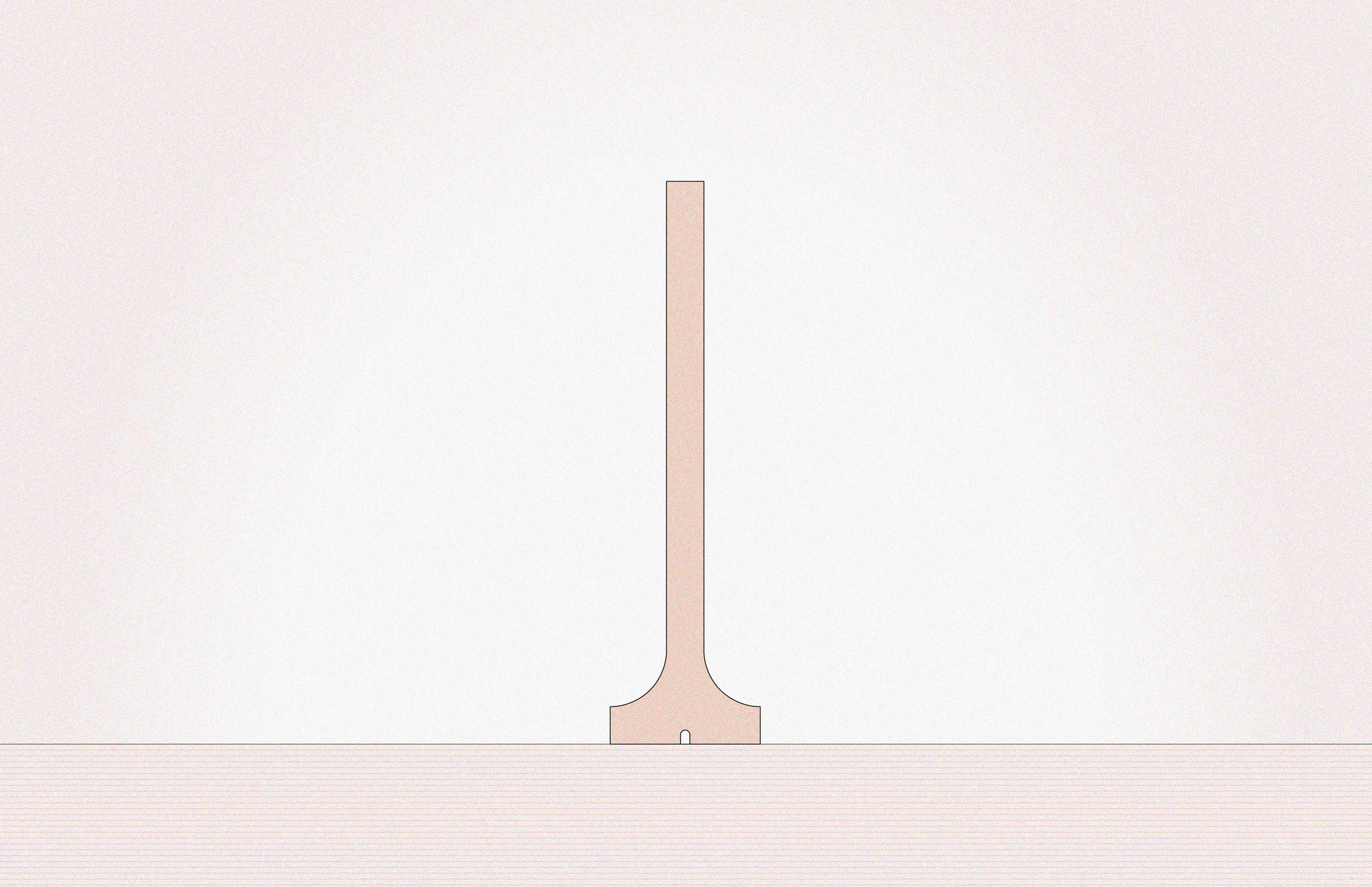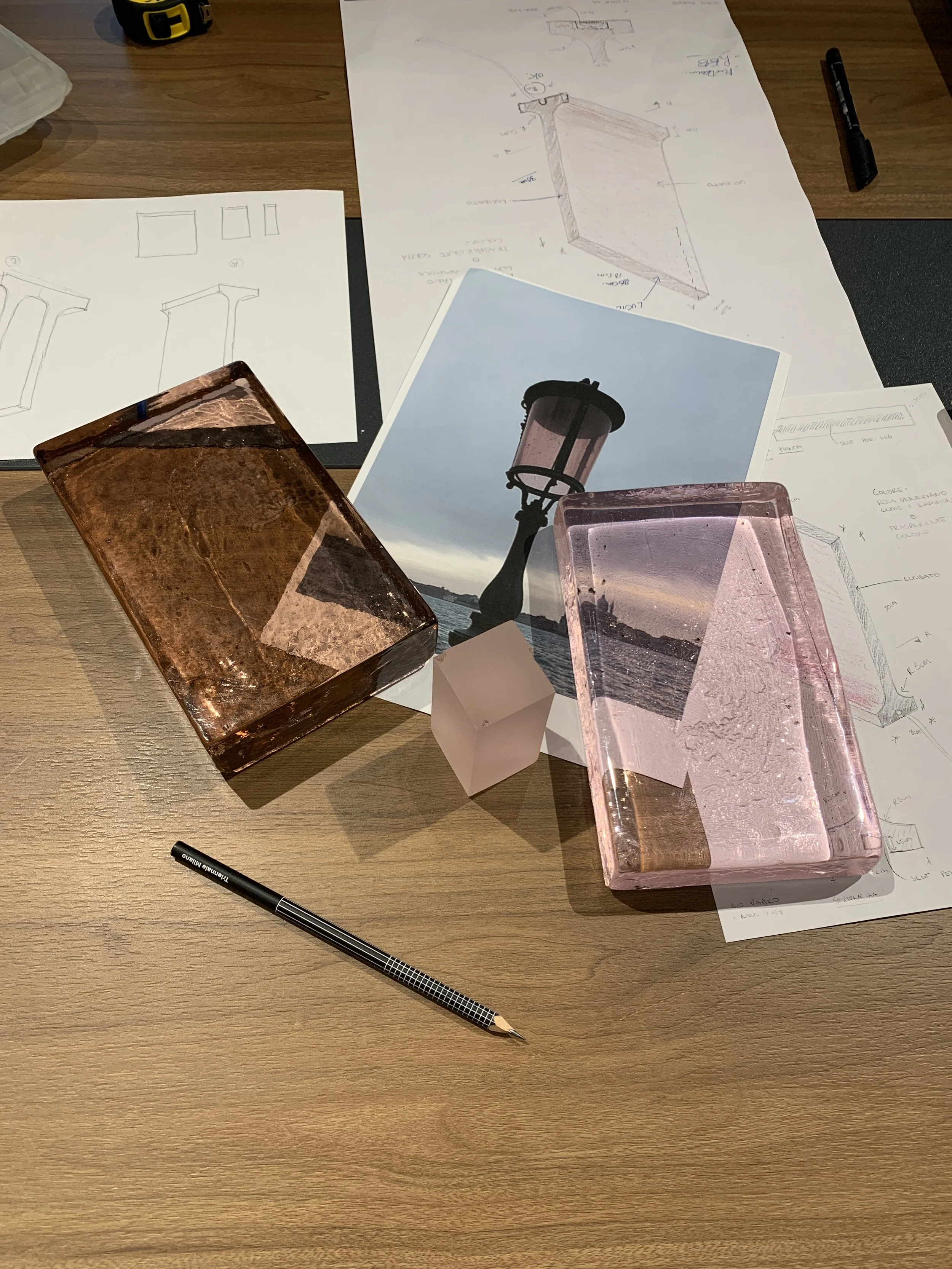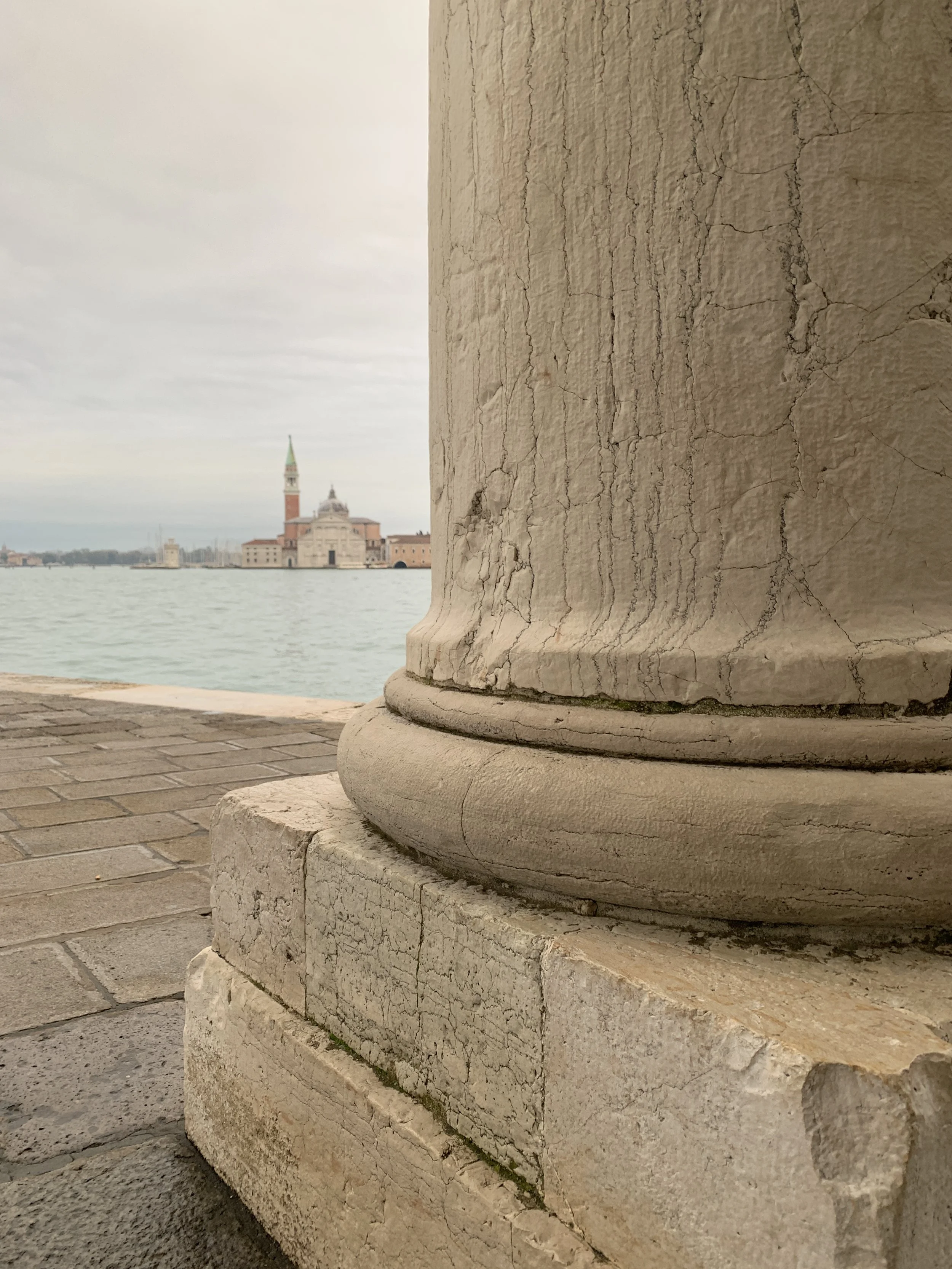LUME
Venice, Italy
Table Lamp
Lume is a table lamp formed of a monolithic, coloured block of glass, conceived of and fabricated in Venice, Italy. Its clean form references the base of a classical stone column—specifically, the transition of the column shaft to the column base. This moment, called the congé, is a subtle widening of the column through an outward concave curve. It is a fundamental geometric transition of the classical column base, suggesting weight and permanence, that we interpreted as a linear extrusion of glass rather than a circular extrusion of stone. In contrast to the common perception of glass as a thin and fragile material, Lume explores the idea of conveying the mass and stability of stone.
There is a long tradition of the colour pink in Venice, which is still used to this day for the shades of municipal street lights throughout the city. It is believed that the pink hue was used to ‘correct’ the brightness of the light and provide a softer and more harmonious glow. Lume, made with the earthy and rich ‘Rosa Antico’ glass, pays tribute to this long tradition.
The two principal faces of the lamp have a sand blasted finish, while the three ‘cut’ edges are polished. This surface treatment allows for a duality both in the reading of the lamp’s form, as well as in the way it diffuses light. The polished glass separates what appear to be two suspended ‘sheets’ of frosted glass, which in turn diffuse the light in a soft and uniform way relative to the brighter transmission of light where the lamp is polished.
Lume is fabricated by casting glass in a mold, a process that is done entirely by hand at Berengo Studio in Murano, Venice.
team: Aleris Rodgers, Francesco Valente-Gorjup
Fabricator: Berengo Studio
Side Elevation - Polished Finish
Front Elevation - Sand Blasted Finish
Sketches & Inspiration
Glass samples at Berengo Studio





